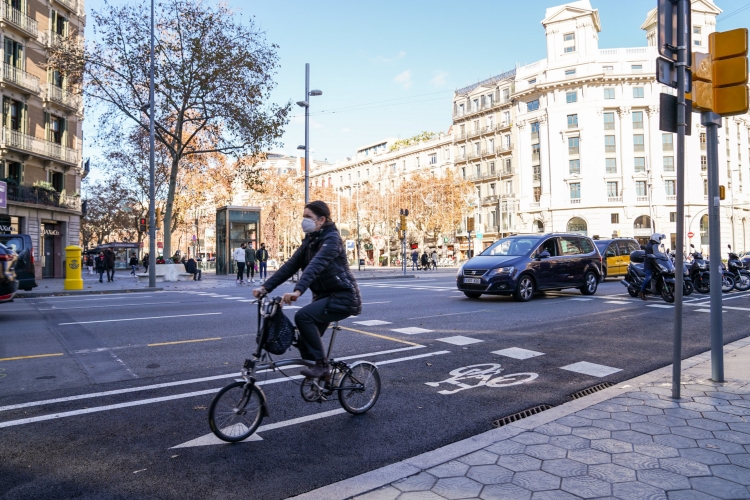Barcelona by bike - a perfect city for cycling?
City council hopes to more than double the number of bicycle journeys by 2024, but accidents have also been on the rise

With over 230km of dedicated lanes, over 100 of which have been built in the last six years, cycling in Barcelona is already a popular means of getting about.
This means that over 90% of the city’s population lives within 300m of a cycle lane, which tend to be located on the pavement, on the road, or completely segregated.
However, with just 2% of commutes currently being done on two wheels, it is still behind walking, public transport and private vehicles in this respect.
Owing to the personal, public and environmental advantages of cycling, the Barcelona city council is always looking to increase the number of cyclists on the streets.
To achieve this, the council is constantly extending the cycle infrastructure network, as well as improving the bike-friendly routes that already exist.
When speaking with Catalan News, Adrià Gomila, the Director of Mobility at the Barcelona City Council said that these improvements included “taking out bicycle lanes from sidewalks and moving them to the roads” and making it so that “all bicycle lanes go in the same direction as other traffic”.
Bicing
Beyond an improvement in infrastructure, in 2007 the city implemented the ‘Bicing’ cycle hire scheme, similar to many found in cities across Europe, in which residents can use bikes available from any of the 500 docking stations across the city for a small fee, starting from €35 a year, and less than a euro extra for up to two hours of use each time.
Furthermore, the city council is in the process of converting the Bicing bikes to electric bicycles to improve the system’s accessibility, whilst also allowing residents in the hillier neighborhoods to use the system more easily.
Lola, from the Bicicleta Club de Catalunya, also told Catalan News that the scheme has caused people “to think about using bikes in another way” as “they start to think they can move with a bike, they can move differently, they don’t need to buy a bike because they already have one”.
The trend has even spread to youngsters, with schemes starting up to help teach children cycling proficiency, whilst also having fun and getting around. One of these is the Bicibús project, in which school children meet at a particular location one morning a week, and follow one of the eight predetermined routes in the company of adults, going past local schools, with children ‘getting off’ the bus at each one. So far, 35 schools around the Catalan capital have got involved in the scheme.
Cycle safety
An increase in the number of cyclists in cities also brings new safety challenges, as road users must learn to coexist in the public space.
Barcelona is no different, as a 77% increase in the number of cyclists in the last decade yielded around 7,500 accidents involving bicycles, with more and more each year.
With their 2024 Urban Mobility Plan, the city council is taking cycle safety into account, as the new routes to be built “are physically separated from traffic, and all traffic light and sign design is done following the safety regulations”, according to Gomila.
However, he added that in order for safety to improve, the mindset of some road users does need to change, as we all need to “be conscious that you could hurt someone else”.
Nonetheless, Barcelona is already a city with a healthy cycle infrastructure which is always improving, and as Lola explained to Catalan News, has the potential to become a cycling Mecca, thanks to its “good weather all year”, its topography, as well as the fact that its compactness means that most journeys are a very bikeable distance, concluding that “if you really want to use a bicycle, this kind of city is the city you need to choose”.